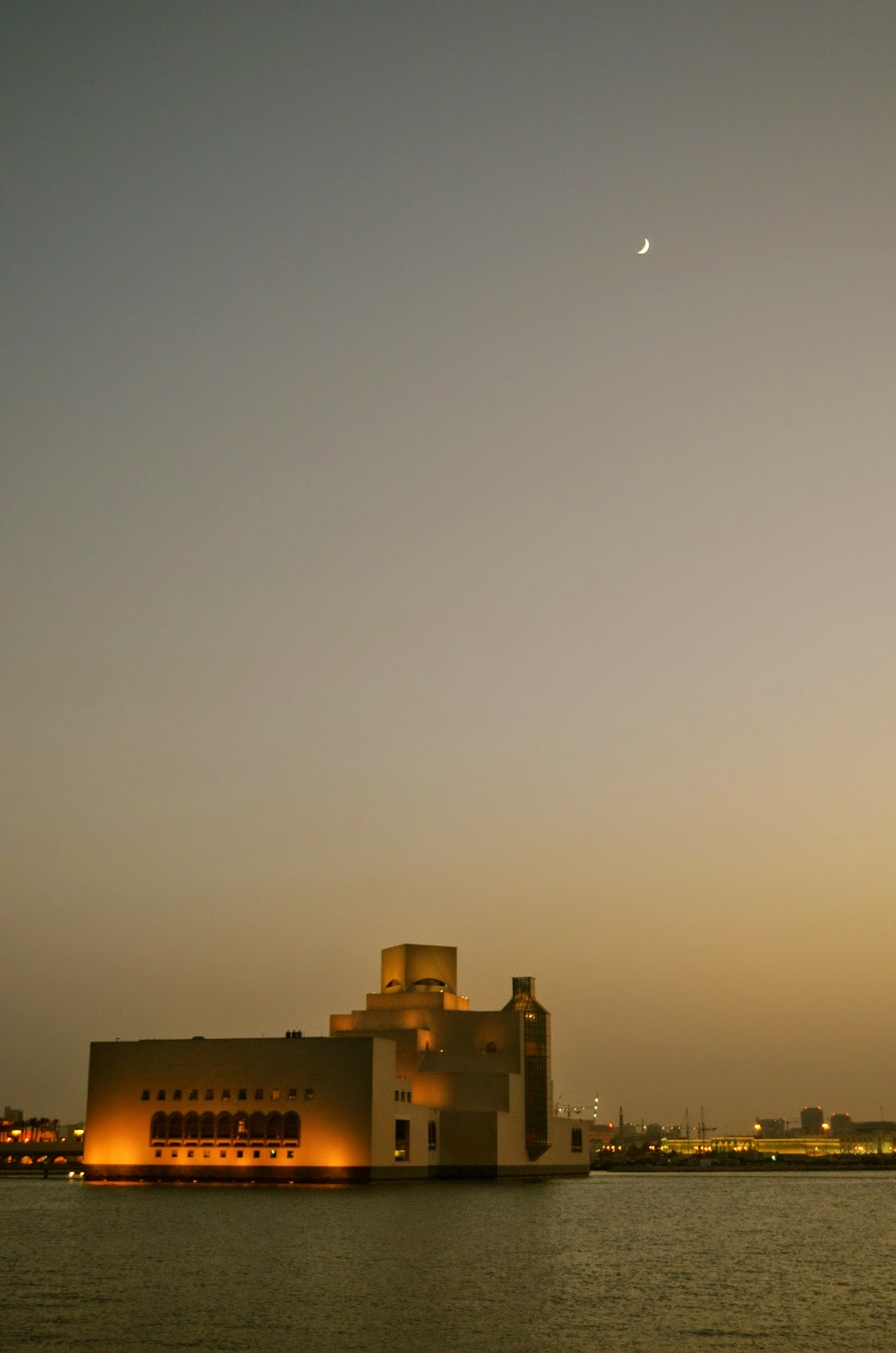Here are a few works of art that really intrigued me.
The Museum from afar.
As the sun sets, the light fixtures along the base of the foundation begins to glow.
A potential painting.
Planispheric Astrolabe.
Incense Burner.
Ewer.
Qur'an Page in Eastern Kufic, Muhaqqaq, and Rayhani scripts.
Calligraphic Compositions.
Daggers.
Section from a wooden beam.
Incense Burner.
Incense Burner.
Tap and Ewer.
Powder Flask and Ewer.
Powder Flask and Oil Lamp.
Ceramic Bowls.
Planispheric Astrolabes.
Planispheric Astrolabes and scripts explaining their function. An astrolabe was a tool used to locate and predict the position of the sun, moon, planets, and stars. It also was able to determine local time, local longitude/latitude, triangulation, and to cast horoscopes.
In the Islamic world, it was also used to calculate the Qibla and to find times for Salat prayers.
Planispheric Astrolabes.
Planispheric Astrolabes.
Sundial.
Head from a Statue.
Bowl.
Figure of Mother and Child.
Ewer and Inkwell.
Pottery.
Jars.
Mosaic Floor Tile Fragments.
Priming Flasks and Daggers with their Scabbards.
Dagger and scabbard.
Horse Headed Dagger.
Priming Flask.
Scale comparison.
Mosque Lamp.
Ka'aba Key.
Ceramic Jars.
Pottery.
Museum of Islamic Art at night.










































No comments:
Post a Comment